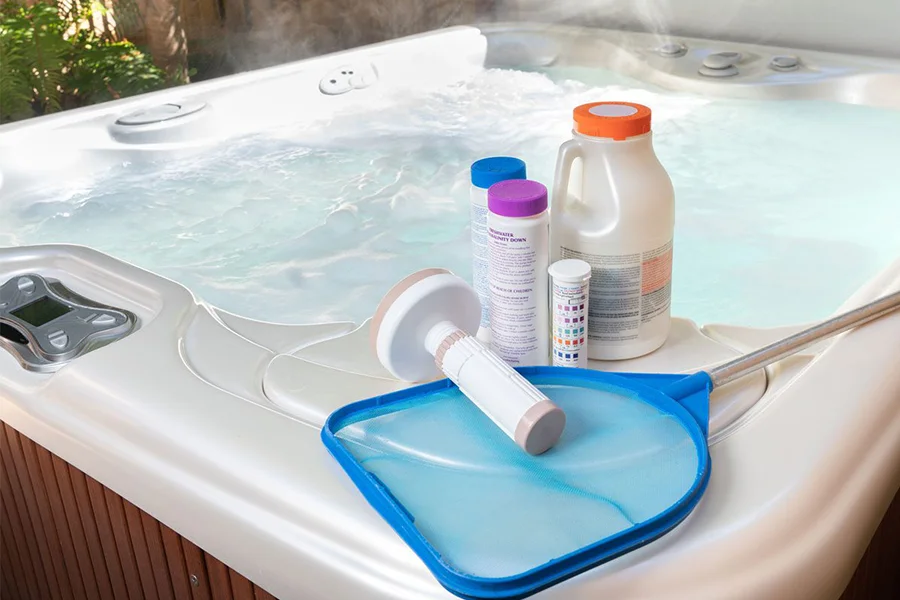Hot Tub Chemicals for Residential Application Market: Insights, Trends & Forecast to 2027

The hot tub chemicals for residential application market is gaining notable momentum as more homeowners invest in luxury wellness experiences at home. Valued at US$ 828.09 million in 2019, the market is projected to reach US$ 1,369.47 million by 2027, growing at a CAGR of 7.0% from 2020 to 2027. This growth is fueled by increasing demand for water sanitation, user-friendly chemical solutions, Sanitizers and rising health consciousness.
Market Overview
Hot tub chemicals play a critical role in maintaining water hygiene, balancing pH levels, eliminating bacteria, and preventing the buildup of harmful contaminants. With rising installations of residential spas and hot tubs, the need for consistent chemical treatment is escalating.
Key chemicals include:
- Sanitizers (chlorine, bromine)
- pH balancers
- Oxidizers and shock treatments
- Algaecides and clarifiers
The residential segment is seeing increased consumer interest in low-odor, skin-friendly, and eco-conscious formulations, which is reshaping the product landscape.
Key Market Drivers
- Rising Home Spa Culture
Since the COVID-19 pandemic, consumers have turned to at-home wellness, driving a surge in residential hot tub purchases. Regular maintenance of water quality has become essential, thereby boosting the demand for hot tub chemicals for residential application.
- Health and Hygiene Awareness
Consumers are now more aware of water-borne diseases and skin irritations caused by improperly treated spa water. This has led to a significant uptick in demand for high-performance sanitizers and pH balancers.
- Innovation in Chemical Formulations
Manufacturers are introducing multi-functional, pre-measured, and enzyme-based chemical products to enhance ease of use and reduce user error. These products appeal to busy homeowners looking for efficient solutions.
- Shift Toward Eco-Friendly Products
Environmental regulations and consumer preferences are encouraging the development of biodegradable and less harsh chemical alternatives, especially those that reduce water wastage and chemical dependency.
Market Segmentation
By Product Type
- Sanitizers: Dominant segment owing to demand for chlorine and bromine-based solutions.
- Oxidizers/Shocks: Used to remove organic contaminants.
- pH & Alkalinity Adjusters: Maintain safe water chemistry.
- Algaecides & Clarifiers: Ensure clear and debris-free water.
By Distribution Channel
- Offline Stores: Still the primary purchasing point, particularly specialty pool/spa outlets.
- Online Channels: Fast-growing segment with the rise of e-commerce and auto-refill subscription services.
Regional Outlook
North America
North America dominates the hot tub chemicals for residential application market due to high hot tub ownership and consumer awareness. The U.S. market contributes significantly due to a preference for at-home wellness solutions.
Europe
Europe is experiencing steady growth, especially in countries like the UK, Germany, and France, where eco-conscious consumerism drives demand for green chemicals.
Asia-Pacific
APAC is an emerging market, with growth driven by rising disposable income, urbanization, and increased awareness of luxury wellness practices.
Competitive Landscape
Major players in the hot tub chemicals for residential application market include:
- BioLab, Inc.
- Robarb (Robelle Industries)
- Clorox Pool & Spa
- Natural Chemistry
- OxyChem
- Solvay SA
These companies are focusing on innovation, product diversification, and environmentally safe offerings to gain competitive advantage.
Market Challenges
Despite favorable growth, the market faces challenges:
- Health concerns around overuse of chlorine and bromine.
- Storage and safety regulations for chemical handling.
- Complexity for new users who may find hot tub maintenance confusing.
Manufacturers and retailers need to address these through education, product labeling, and digital support tools.
Future Outlook
With the market expected to surpass US$ 1.36 billion by 2027, opportunities are abundant. Smart chemical dispensers, mobile water testing kits, and green alternatives are expected to dominate the future landscape.
Hot tub chemicals for residential application will continue to evolve, with manufacturers shifting toward solutions that are automated, safer, and sustainable.



Comments
Post a Comment